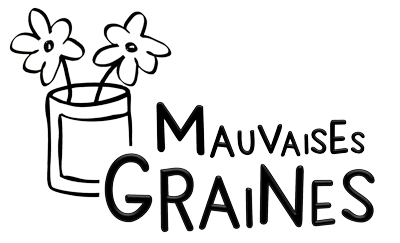

Avez vous consulté ces collections ?


Français
Le sapin Nordmann est un impressionnant Arbre de Noël grâce à son feuillage élégant et abondant et qui ne pique pas. Il peut se cultiver en pot. Son bois est utilisé également pour la construction, la production de pâte à papier et de certains instruments de musique. Supportant très bien la pollution il est aussi devenu un arbre idéal dans les parcs publics et les jardins de zones urbaines.
Ce sapin peut atteindre 60m. Persistant, abondant, souple, vert vif et brillant. Ses cônes de 15 cm de long environ sont cylindriques. Ils sont verts au début et deviennent brun-rougeâtres à maturité. Tout sol, résistant aux gelées. Espèce exotique, originaire de la cordillère du Caucase et du nord-est de la Turquie, où ils vivent entre 400 et 2000m d’altitude.
Préparer la boîte à semer les sapins
• Ouvrir la boîte et la vider de son contenu.
• Déposer le cercle de tourbe au fond de la boîte et verser 20 cl d'eau. Laisser l'eau s'imbiber pendant une heure. La tourbe grossira de 7 fois son volume. Bien séparer les mottes à l'issu du processus.
Avant de semer
Il faut stratifier les graines au froid aux alentours de 5° au réfrigérateur pendant 45-60 jours. Pour ce faire, mettre les graines dans un sachet plastique dans le bac à légume du frigo.
Quand faire le semis ?
Le semis sera fera entre février et avril, en fonction des zones géographiques et de l’altitude.
Comment faire le semis ?
Introduire la graine à 1 cm de profondeur dans la boite jusqu'à germination. Le terreau doit être humide sans être détrempé jusqu’à la germination des graines. Arroser régulièrement à cet effet avec un pulvérisateur.
Lorsque le plant faire quelques centimètres, le mettre dans un pot plus grand ou en pleine terre. Continuer d'arroser pour un développement optimal.

English
The Nordmann fir is an impressive Christmas tree thanks to its elegant, abundant and non-stinging foliage. It can be grown in pots. Its wood is also used for construction, the production of paper pulp and some musical instruments. It has also become an ideal tree for public parks and gardens in urban areas.
This tree can reach 60m. Evergreen, abundant, flexible, bright green and shiny. Its cones are cylindrical and about 15 cm long. They are green at first and turn reddish-brown at maturity. Any soil, frost resistant. An exotic species, native to the Caucasus Mountains and northeastern Turkey, where they live at altitudes of 400 to 2000m.
Preparing the tree planting box
• Open the box and empty it of its contents.
• Peat version: place the peat circle at the bottom of the box and pour 20 cl of water. Let the water soak in for one hour. The peat will expand by 7 times its volume. Separate the clumps well at the end of the process.
Before sowing
The seeds should be cold-stratified at around 5° in the refrigerator for 45-60 days. To do this, put the seeds in a plastic bag in the vegetable compartment of the fridge.
When to sow?
Sowing will be done between February and April, depending on the geographical area and altitude.
How to sow?
Place the seed 1 cm deep in the box until it germinates. The soil should be moist but not soggy until the seeds have germinated. Water regularly for this purpose with a sprayer.
When the seedling is a few centimeters tall, place it in a larger pot or in the ground. Continue watering for optimal development.

Español
El abeto de Nordmann es un árbol de Navidad impresionante, gracias a su follaje elegante, abundante y que no pica. Se puede cultivar en maceta. Su madera se utiliza también para la construcción, la pasta de papel y ciertos instrumentos musicales. Resiste muy bien la contaminación, por lo que se ha convertido en un árbol ideal para los parques y jardines públicos de las zonas urbanas.
Este árbol puede alcanzar los 60 m. De hoja perenne, abundante, flexible, de color verde vivo y brillante. Sus conos son cilíndricos, de unos 15 cm de largo. Son verdes al principio y se vuelven marrón rojizo al madurar. Todos los suelos, resistente a las heladas. Especie exótica, originaria de la cordillera del Cáucaso y del noreste de Turquía, donde crece entre 400 y 2000 metros de altitud.
Preparación de la caja de siembra
• Abra la lata y vacíe su contenido.
• Versión con turba: coloque el círculo de turba en el fondo de la lata y vierta 20 cl de agua. Deja el agua en remojo durante una hora. La turba se expandirá 7 veces su volumen. Separe bien los terrones al final del proceso.
Antes de sembrar
Las semillas deben estratificarse en frío a unos 5° en el frigorífico durante 45-60 días. Para ello, coloque las semillas en una bolsa de plástico en el compartimento de verduras del frigorífico.
Cuándo sembrar?
La siembra tiene lugar entre febrero y abril, según la zona geográfica y la altitud
Cómo sembrar?
• Coloque las semillas a 1 cm de profundidad en la caja hasta que germinen. La tierra debe estar húmeda pero no empapada hasta que las semillas hayan germinado. Riegue regularmente con un pulverizador.
• Cuando la plántula mida unos centímetros, colócala en una maceta más grande o en el suelo. Sigue regando para un desarrollo óptimo.

Deutsch
Die Nordmanntanne ist dank ihres eleganten, üppigen und nicht stechenden Laubs ein beeindruckender Weihnachtsbaum. Sie kann in Töpfen kultiviert werden. Ihr Holz wird auch zum Bauen, für die Herstellung von Zellstoff und für bestimmte Musikinstrumente verwendet. Da sie sehr gut mit Umweltverschmutzung zurechtkommt, ist sie auch ein idealer Baum für öffentliche Parks und Gärten in städtischen Gebieten geworden.
Die Tanne kann bis zu 60 m hoch werden. Sie ist immergrün, üppig, biegsam, leuchtend grün und glänzend. Seine ca. 15 cm langen Zapfen sind zylindrisch. Sie sind anfangs grün und werden bei Reife rötlich-braun. Für alle Böden geeignet, frosthart. Exotische Art, ursprünglich aus dem Kaukasusgebirge und der nordöstlichen Türkei, wo sie zwischen 400 und 2000 m Höhe leben.
Die Aussaatbox für die Bäume vorbereiten
• Öffne die Dose und entleere sie.
• Version Torf: Legen Sie den Torfkreis auf den Boden der Dose und gießen Sie 20 cl Wasser hinein. Lassen Sie das Wasser eine Stunde lang einziehen. Der Torf wird sich um das Siebenfache seines Volumens vergrößern. Trennen Sie die Klumpen am Ende des Prozesses gut voneinander.
Vor der Aussaat
Man muss die Samen bei Kälte um 5° im Kühlschrank für 45-60 Tage stratifizieren. Dazu die Samen in einer Plastiktüte in das Gemüsefach des Kühlschranks legen.
Wann soll die Aussaat erfolgen?
Die Aussaat erfolgt zwischen Februar und April, je nach geographischer Lage und Höhenlage.
Wie säe ich aus?
Den Samen 1 cm tief in die Schachtel einführen, bis er keimt. Die Erde sollte feucht, aber nicht nass sein, bis der Samen keimt. Zu diesem Zweck regelmäßig mit einer Sprühflasche gießen.
Wenn der Keimling einige Zentimeter groß ist, setzen Sie ihn in einen größeren Topf oder ins Freiland. Für eine optimale Entwicklung weiter gießen

Italiano
L'abete Nordmann è un albero di Natale di grande effetto, grazie al suo fogliame elegante, abbondante e non infestante. Può essere coltivato in vaso. Il suo legno viene utilizzato anche per l'edilizia, la pasta di carta e alcuni strumenti musicali. Resistendo molto bene all'inquinamento, è diventato anche un albero ideale per i parchi pubblici e i giardini delle aree urbane.
Questo albero può crescere fino a 60 m. Sempreverde, abbondante, flessuoso, verde brillante e lucido. I coni sono cilindrici, lunghi circa 15 cm. All'inizio sono verdi e diventano bruno-rossastri a maturità. Tutti i terreni, resistente al gelo. Specie esotica, originaria della Cordigliera del Caucaso e della Turchia nord-orientale, dove cresce ad altitudini comprese tra i 400 e i 2000 metri.
Preparazione della cassetta di semina dell'abete Nordmann
• Aprire il barattolo e svuotarlo del suo contenuto.
• Versione con torba: posizionare il cerchio di torba sul fondo del barattolo e versare 20 cl di acqua. Lasciare l'acqua in ammollo per un'ora. La torba si espanderà di 7 volte il suo volume. Alla fine del processo, separare bene i grumi.
Prima della semina
I semi devono essere stratificati a freddo a circa 5° in frigorifero per 45-60 giorni. A tal fine, riporre i semi in un sacchetto di plastica nello scomparto delle verdure del frigorifero.
Quando seminare?
La semina avviene tra febbraio e aprile, a seconda della zona geografica e dell'altitudine.
Come seminare?
• Posizionare il seme a 1 cm di profondità nella cassetta finché non germoglia. Il terreno deve essere umido ma non inzuppato fino a quando i semi non sono germogliati. Innaffiate regolarmente con uno spruzzatore.
• Quando la piantina è alta qualche centimetro, mettetela in un vaso più grande o nel terreno. Continuate ad annaffiare per uno sviluppo ottimale.
Fabriqué en France
De Toulouse à La Rochelle, chaque élément est local, éthique et assemblé en ESAT avec soin.
Livraison rapide
et offerte en point relais à partir de 40 €
Le cadeau parfait
Original et écolo-ludique
Paiement sécurisé
Visa, Mastercard, CB, Paypal, AMEX
